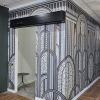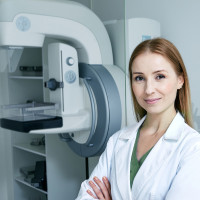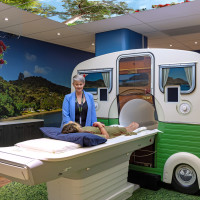The electromagnetic spectrum includes X-rays, radiowaves, microwaves and visible light. X-rays have an extremely short wavelength, or high frequency, making them high energy. This means they can penetrate most materials. X-rays are used in medicine to examine the body ‘structure’. They are most useful for bones in the body but also show some soft tissue detail as well.
X-ray services we offer...
X-ray (radiography) is the most frequently performed radiology procedure. Canopy Imaging performs many thousands of these examinations each year.

How much radiation is used in these exams?
Every day we are exposed to radiation from soil, rocks, building materials, water and cosmic radiation. This is commonly referred to as ‘background radiation’. People living at higher altitudes will be exposed to more cosmic radiation than people living at sea level.
We can compare the amount of radiation we receive through an X-ray examination by measuring the dose affecting the patient and comparing this with the background radiation we are exposed to every day. Different parts of the body have varying sensitivity to radiation dose so the term ‘effective dose’ looks at the dose averaged over the whole body.

What are the risks?
The benefits of accurate diagnosis far outweigh the risk of harm from the low radiation dose used. To be safe, we err on the side of caution. Our Radiologists and technicians have been trained to use the smallest radiation exposure necessary to obtain the required information for your condition.
You are encouraged to keep track of your X-ray history and inform your doctor what you have had imaged to help provide informed advice on your diagnosis and treatment. This record keeping is especially important if you change your healthcare provider.
The appointment generally takes less than half an hour.
Where can I get X-ray done?
We have multiple locations available for X-rays throughout New Zealand
Please select your location belowon the right to contact us
















